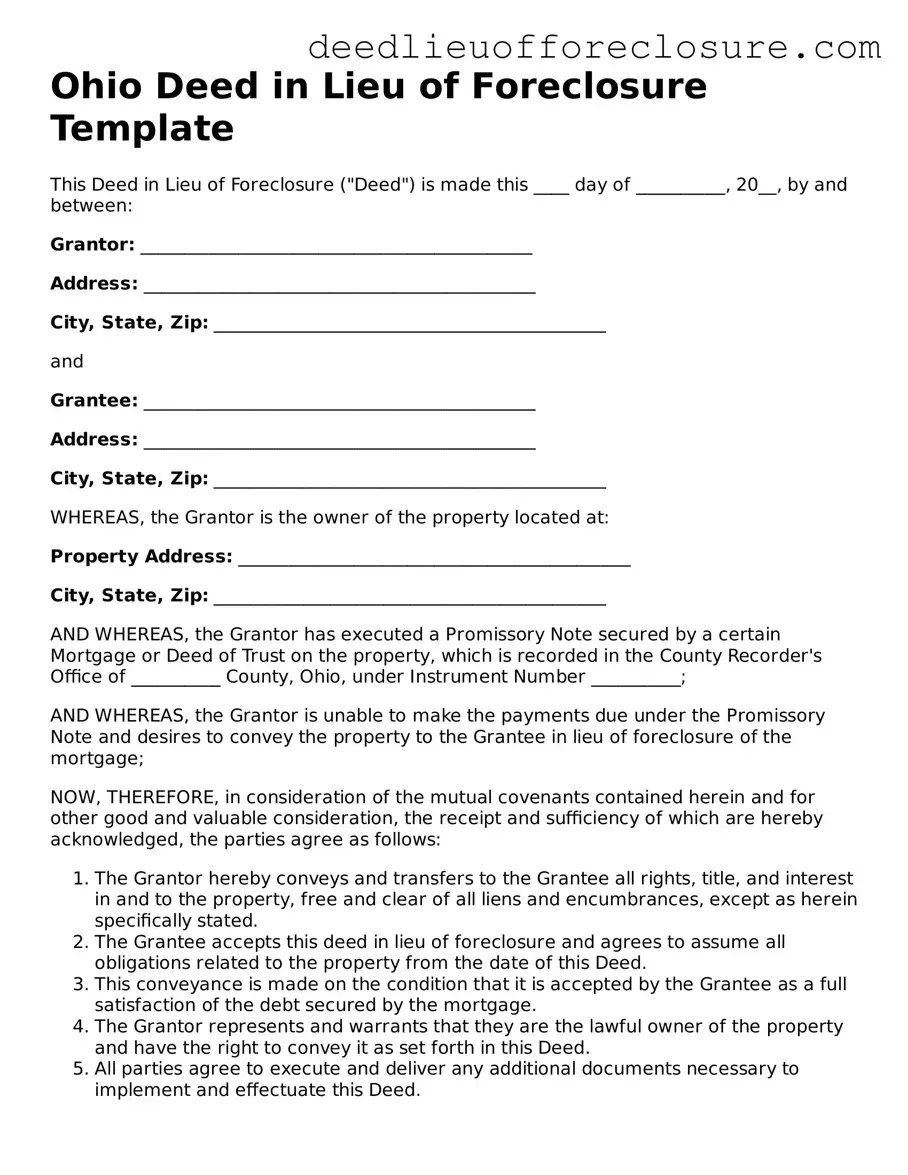Ohio Deed in Lieu of Foreclosure Template
This Deed in Lieu of Foreclosure ("Deed") is made this ____ day of __________, 20__, by and between:
Grantor: ____________________________________________
Address: ____________________________________________
City, State, Zip: ____________________________________________
and
Grantee: ____________________________________________
Address: ____________________________________________
City, State, Zip: ____________________________________________
WHEREAS, the Grantor is the owner of the property located at:
Property Address: ____________________________________________
City, State, Zip: ____________________________________________
AND WHEREAS, the Grantor has executed a Promissory Note secured by a certain Mortgage or Deed of Trust on the property, which is recorded in the County Recorder's Office of __________ County, Ohio, under Instrument Number __________;
AND WHEREAS, the Grantor is unable to make the payments due under the Promissory Note and desires to convey the property to the Grantee in lieu of foreclosure of the mortgage;
NOW, THEREFORE, in consideration of the mutual covenants contained herein and for other good and valuable consideration, the receipt and sufficiency of which are hereby acknowledged, the parties agree as follows:
- The Grantor hereby conveys and transfers to the Grantee all rights, title, and interest in and to the property, free and clear of all liens and encumbrances, except as herein specifically stated.
- The Grantee accepts this deed in lieu of foreclosure and agrees to assume all obligations related to the property from the date of this Deed.
- This conveyance is made on the condition that it is accepted by the Grantee as a full satisfaction of the debt secured by the mortgage.
- The Grantor represents and warrants that they are the lawful owner of the property and have the right to convey it as set forth in this Deed.
- All parties agree to execute and deliver any additional documents necessary to implement and effectuate this Deed.
IN WITNESS WHEREOF, the parties hereto have executed this Deed as of the date first above written.
Grantor: ____________________________________________
Grantee: ____________________________________________
STATE OF OHIO, COUNTY OF __________
Before me, a Notary Public in and for said County and State, personally appeared ____________________________________________, who acknowledged that they executed the foregoing Deed in Lieu of Foreclosure for the purposes therein contained.
WITNESS my hand and official seal this ____ day of __________, 20__.
____________________________________
Notary Public
My Commission Expires: _______________
